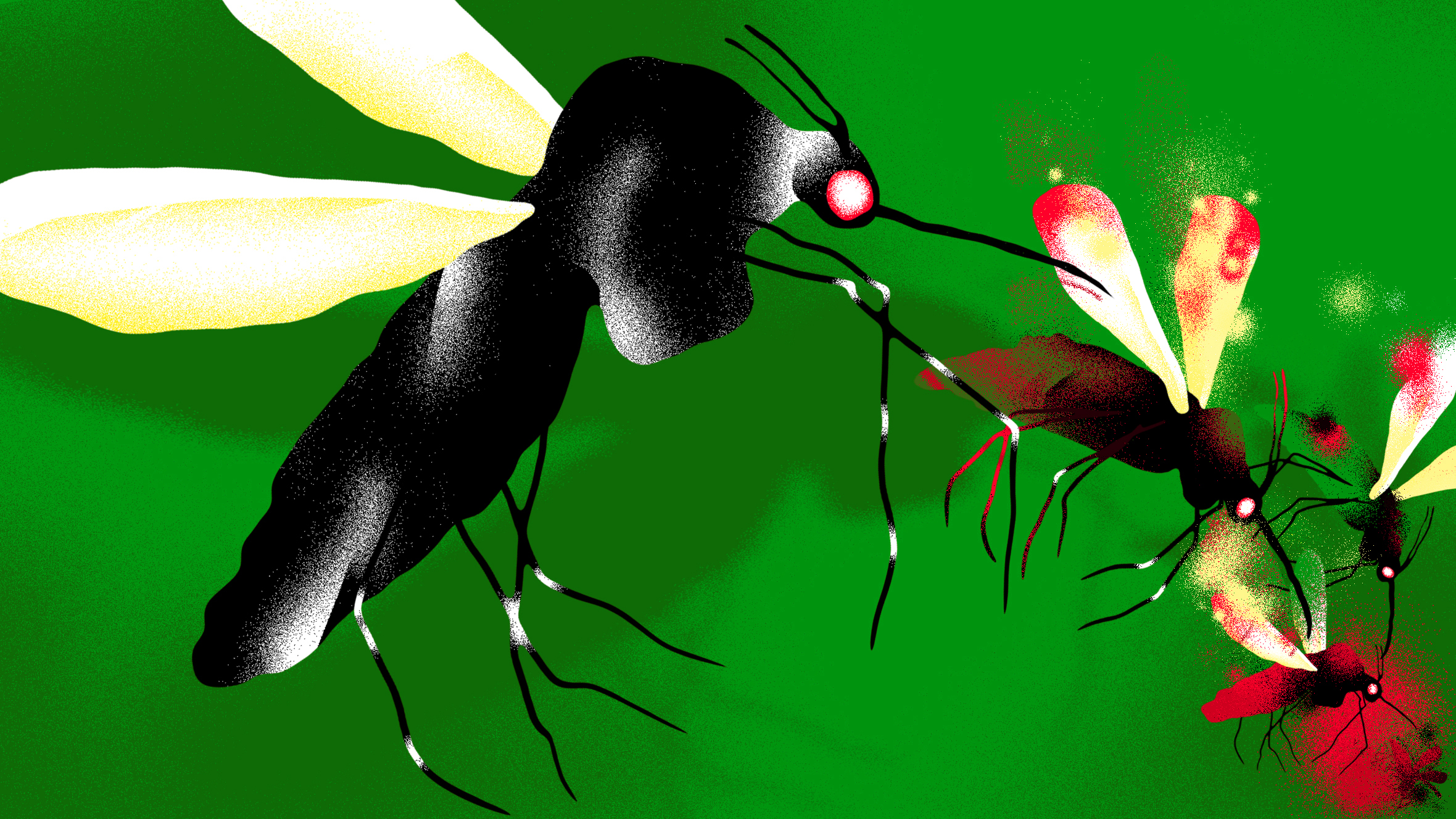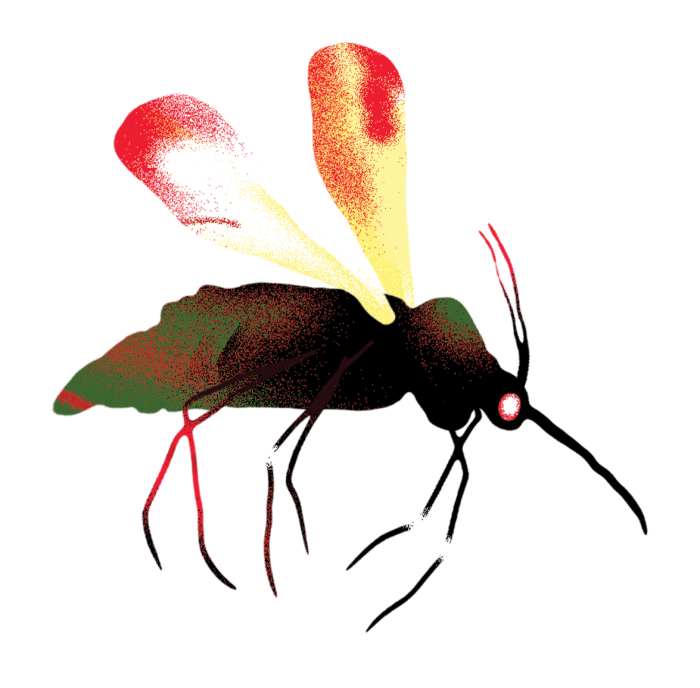Alphabet’s Latest Project Is Birth Control for Mosquitoes

At one of Alphabet’s campuses in Mountain View, California, entomologists working behind the steel door of a bio-safety lab are breeding mosquitoes in a new effort by the search giant to create automated insect farms.
The work is a surprise new project by Alphabet’s health spin-off, Verily, which says it hopes to release millions or billions of sterilized mosquitoes as a way to battle the spread of dengue and the Zika virus, including in U.S. cities.
The plan, endorsed at the highest levels of Alphabet, formerly known as Google and the world’s second most valuable company after Apple, involves new gadgetry for rearing mosquitoes, geospatial software to track them, and plans for pilot tests in which mosquitoes would be released from trucks in urban areas.
Big, hard-to-solve public health problems seem increasingly irresistible to Silicon Valley. Last month, Mark Zuckerberg announced he’d give away $3 billion to solve “all disease” within a century. And Verily’s jump into mosquitoes also lands it in territory already staked out by Microsoft billionaire Bill Gates, whose foundation has spent $40 million on Eliminate Dengue, a mosquito program preparing large-scale interventions in Rio de Janeiro and Medellin, Colombia.

Verily’s project, still at an early stage, is the brainchild of Linus Upson, a senior Google engineer who previously headed Chrome, the company’s category-killing Internet browser. Mosquitoes kill more people than any other animal and, Upson says, “the question is what could Google do to solve it."
Zika and dengue are spread by Aedes aegypti, an urban mosquito that’s widespread in Latin America and has found its way north. This year the bug began spreading Zika in Miami, causing the first locally acquired cases of that disease in the U.S.
Verily says it is announcing its project because it is hoping to conduct field tests of its mosquitoes, plans that would become public anyway. “People in some parts of the U.S. are asking for help,” says Upson. “But if we are going to release mosquitoes in the real world, we need to talk to communities. This isn’t like launching a consumer Internet service.”
Upson declined to say which areas, cities, or countries might be first, saying discussions with partner organizations were ongoing. Verily is part of Alphabet’s “other bets,” including Google Fiber, anti-aging company Calico, and Nest. In the first six months of 2016, these ventures lost $1.6 billion, and some investors will scratch their heads at the idea of the Silicon Valley giant creating mosquito farms.
Alphabet’s life science subsidiary has launched an array of new ventures, including miniature glucose sensors and a $700 million joint venture with Glaxo to develop “bioelectronic” drugs, although the company’s ideas have also drawn criticism for being seemingly disconnected and far-fetched.
Upson, a vice president for engineering at Verily, spent a year investigating every aspect of mosquito science, e-mailing experts, even sitting in on meetings being held in Hawaii, where mosquitoes are ravaging native birds.
“I’ve known they were interested, but the work has been done under a lot of secrecy,” says Scott O’Neill, the Australian entomologist who leads Eliminate Dengue.
Verily considered a variety of ideas for controlling mosquitoes. One technology Upson looked at is gene drives, a “selfish” DNA construct that mosquitoes pass to their offspring, but that later poisons them. But that idea is controversial and still in the early stages, says Upson. Verily also passed up a chance to buy Oxitec, a U.K. company that has been testing gene-modified mosquitoes, and was later acquired by Intrexon, a U.S. synthetic biology conglomerate, for $160 million. Alphabet’s health spin-off instead settled on a less radical way of modifying mosquitoes that involves infecting them with a bacteria called Wolbachia. When a male carrying Wolbachia mates with a normal female, her eggs are incorrectly fertilized and offspring don’t develop. Think of it as a form of birth control.
Releasing millions of males in a neighborhood or city could cause mosquito populations to disappear.
The Wolbachia technique is fairly well studied, deemed safe, and is also lightly regulated in the U.S. as a “biopesticide.” One company, Mosquito Mate, based in Kentucky, has already been testing the technique in Los Angeles and near Fresno, and its trials haven’t generated any public outcry.
“This is a great field to be in if your motto is ‘don't be evil,’” says Guy Reeves, an evolutionary biologist at the Max Planck Institute, referring to the original motto of Google. “It’s possible to undertake experimental releases without endangering the community consent that is always the basis for effective mosquito control.”
The “sterile male technique” can be effective. A decades-long campaign of insect releases has driven back a cattle pest, the screwworm, all the way from Texas to the isthmus of Panama. The U.S. Department of Agriculture also still spreads sterile fruit flies in California. Those bugs are sterilized with radiation.
Mosquito control is generally handled by public health authorities, so how Verily could make money at it is not clear. Upson says Google often launches products, like the free Chrome browser, even if there’s no money in it right away. “We don’t need all the answers to get started,” Upson says. “We can see where it lands.”
Verily does think it can make mosquitoes fast and cheaply. Its engineers are developing automated ways to rear them and to separate the males from females, a task currently handled manually by shaking pupae through a filter. “It’s labor-intensive, and we want to bring some engineering to it,” says Upson. “We can make it cheaper to do at scale.”
Keep Reading
Most Popular
Large language models can do jaw-dropping things. But nobody knows exactly why.
And that's a problem. Figuring it out is one of the biggest scientific puzzles of our time and a crucial step towards controlling more powerful future models.
The problem with plug-in hybrids? Their drivers.
Plug-in hybrids are often sold as a transition to EVs, but new data from Europe shows we’re still underestimating the emissions they produce.
Google DeepMind’s new generative model makes Super Mario–like games from scratch
Genie learns how to control games by watching hours and hours of video. It could help train next-gen robots too.
How scientists traced a mysterious covid case back to six toilets
When wastewater surveillance turns into a hunt for a single infected individual, the ethics get tricky.
Stay connected
Get the latest updates from
MIT Technology Review
Discover special offers, top stories, upcoming events, and more.